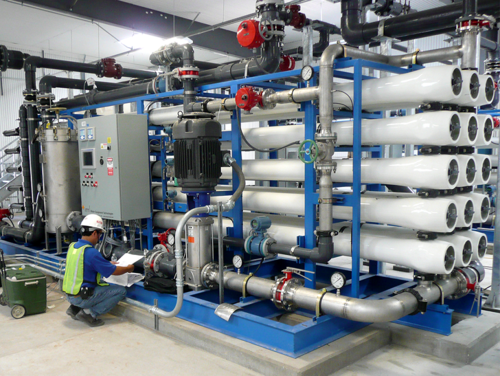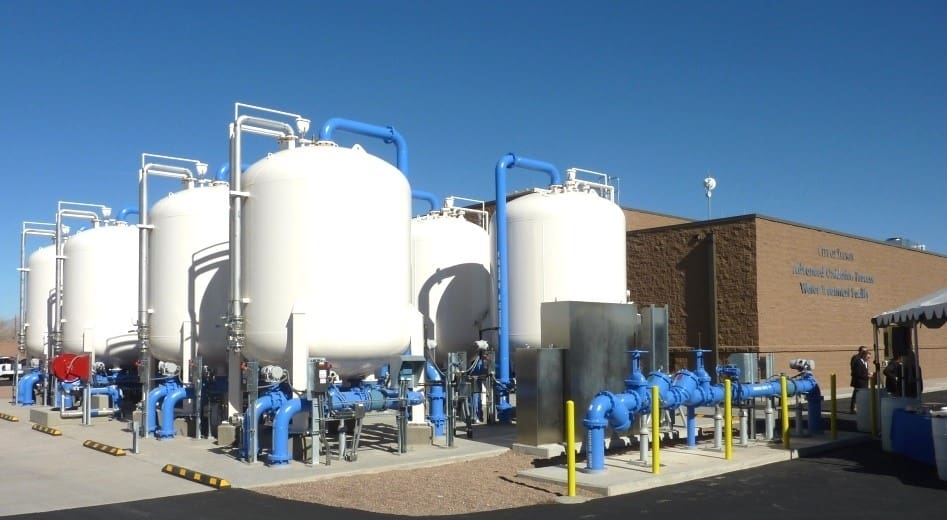Your Guide to PFAS Treatment Technologies and Advantages
The frequency of PFAS contamination in water resources demands a detailed understanding of available treatment modern technologies. Various approaches, such as turned on carbon purification, ion exchange systems, and advanced oxidation processes, existing distinctive benefits in addressing these persistent toxins. Each modern technology not only targets certain PFAS substances however likewise plays a critical duty in improving general water quality and shielding ecological stability. As communities face the effects of PFAS exposure, the option of an ideal treatment method becomes progressively crucial, prompting a closer assessment of these modern technologies and their corresponding advantages.
Recognizing PFAS Contamination
Understanding PFAS contamination is essential for addressing its prevalent influence on ecological and human wellness (m270 pfas treatment). Per- and polyfluoroalkyl compounds (PFAS) are a group of artificial chemicals commonly utilized in various industrial and consumer products due to their water- and grease-resistant residential properties. Generally found in firefighting foams, non-stick cooking equipment, and water-repellent textiles, PFAS have entered the environment with production procedures, wastewater discharges, and leaching from landfills
As soon as released, these materials persist in the environment, resulting in extensive contamination of dirt and water resources. Their unique chemical structure, defined by strong carbon-fluorine bonds, renders them immune to degradation, leading to a sensation called "forever chemicals." PFAS can build up in the human body and the food chain, possibly causing unfavorable health and wellness results, consisting of immune system disturbance, developmental issues, and a boosted threat of particular cancers.
Regulative agencies and health and wellness companies are progressively acknowledging the significance of PFAS contamination, triggering efforts to monitor, assess, and mitigate its impacts. Comprehending the paths of PFAS contamination is crucial for notifying public law and establishing efficient techniques to safeguard both environmental and human health.
Introduction of Treatment Technologies
Numerous therapy modern technologies have actually been developed to attend to the obstacles presented by PFAS contamination in water and soil. These modern technologies can be broadly categorized right into several classifications, each with its special devices and performance in eliminating PFAS substances.
One famous technique is ion exchange, which utilizes material products to record and remove PFAS from contaminated water. This method is particularly efficient for short-chain PFAS and can attain significant reductions in focus degrees. An additional modern technology, progressed oxidation processes (AOPs), utilizes strong oxidants and ultraviolet light to break down PFAS right into much less damaging substances. AOPs appropriate for treating a large range of PFAS compounds but may need cautious optimization to take full advantage of efficiency.

Triggered Carbon Filtration
Activated carbon filtering is a commonly used approach for the removal of PFAS from polluted water, understood for its capability to adsorb a wide array of organic compounds. This modern technology uses activated carbon, an extremely porous product with a comprehensive surface, which assists in the binding of PFAS particles through physical adsorption. The efficiency of activated carbon in removing PFAS is affected by a number of elements, including the type go to my blog of carbon used, the get in touch with time, and the concentration of PFAS in the water.
Among the benefits of turned on carbon filtration is its versatility; it can be carried out in various setups, such as granular triggered carbon (GAC) systems or powdered activated carbon (PAC) systems. GAC systems are generally employed in larger-scale applications, while political action committee can be utilized in smaller sized or momentary configurations. The modern technology is fairly very easy to operate and keep, making it available for several water therapy centers.

Ion Exchange Systems
Ion exchange systems represent another effective strategy for the elimination of PFAS from polluted water, enhancing techniques like turned on carbon purification. These systems operate on the principle of trading ions in the water with ions held on a resin material. Ion exchange materials can be specifically created to target the negatively charged PFAS compounds, successfully capturing them and allowing cleaner water to go through.
One of the key benefits of ion exchange systems is their capability to eliminate a large range of PFAS, including both long-chain and short-chain variants. This versatility makes them suitable for numerous applications, varying from community water therapy to industrial procedures. In addition, ion exchange systems can often accomplish lower detection limitations for PFAS contrasted to a few other therapy approaches, hence enhancing water top quality.
Nevertheless, it is necessary to keep track of and manage the regeneration of ion exchange media, as the performance can decline with time due to saturation. Correct maintenance and substitute of the resin are crucial for maintaining the system's performance. Overall, ion exchange systems give a reliable and effective service for PFAS removal, adding substantially to risk-free drinking water criteria and ecological protection.
Advanced Oxidation Processes
Advanced Oxidation Processes (AOPs) utilize powerful oxidants to properly degrade PFAS substances in infected water. These cutting-edge therapy methods create highly responsive types, such as hydroxyl radicals, that can break down intricate PFAS particles right into less unsafe results. m270 Check Out Your URL pfas treatment. AOPs usually employ mixes of ultraviolet (UV) light, ozone, hydrogen peroxide, or Fenton's reagent, boosting the oxidation possibility and enhancing degradation efficiency
The primary benefit of AOPs depends on their capacity to target a broad variety of PFAS substances, consisting of both long-chain and short-chain variants. This convenience is essential, as PFAS contamination frequently involves blends of different substances with varying chemical frameworks. AOPs can be incorporated right into existing water treatment systems, making them a functional service for numerous towns and industries.
However, the application of AOPs can be resource-intensive, needing cautious consideration of functional costs and energy intake. Additionally, while AOPs work in breaking down PFAS, they might not completely remove all byproducts, requiring additional treatment steps - m270 pfas treatment. In general, AOPs represent a promising avenue for attending to PFAS contamination, adding to cleaner water sources and enhanced public health protection

Final Thought
By choosing the proper modern technology, neighborhoods can improve water high quality, secure public health and wellness, and reduce the environmental risks linked with PFAS direct exposure. Continued research study and execution of these methods are vital for effective management of PFAS contamination in affected areas.